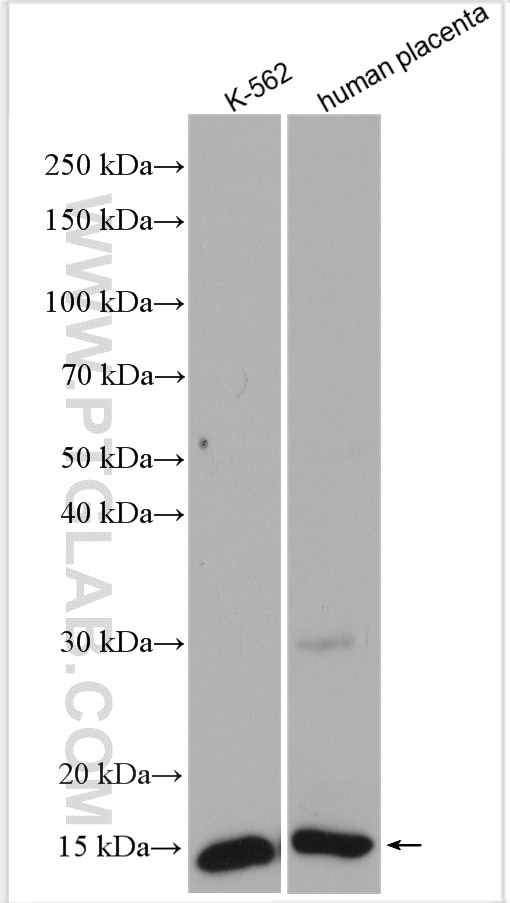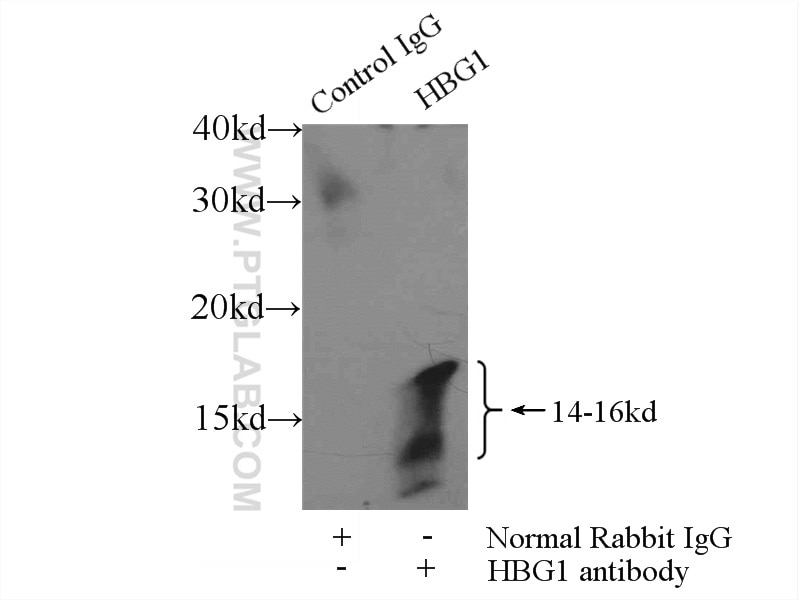Validation Data Gallery
Filter:
Tested Applications
| Positive WB detected in | K-562 cells, human placenta tissue |
| Positive IP detected in | K-562 cells |
Recommended dilution
| Application | Dilution |
|---|---|
| Western Blot (WB) | WB : 1:2000-1:16000 |
| Immunoprecipitation (IP) | IP : 0.5-4.0 ug for 1.0-3.0 mg of total protein lysate |
| It is recommended that this reagent should be titrated in each testing system to obtain optimal results. | |
| Sample-dependent, Check data in validation data gallery. | |
Published Applications
| WB | See 2 publications below |
| IF | See 1 publications below |
Product Information
25728-1-AP targets HBG1 in WB, IF, IP, ELISA applications and shows reactivity with human samples.
| Tested Reactivity | human |
| Cited Reactivity | human |
| Host / Isotype | Rabbit / IgG |
| Class | Polyclonal |
| Type | Antibody |
| Immunogen | HBG1 fusion protein Ag22776 相同性解析による交差性が予測される生物種 |
| Full Name | hemoglobin, gamma A |
| Calculated molecular weight | 147 aa, 16 kDa |
| Observed molecular weight | 14-16 kDa |
| GenBank accession number | BC010913 |
| Gene Symbol | HBG1 |
| Gene ID (NCBI) | 3047 |
| RRID | AB_2880212 |
| Conjugate | Unconjugated |
| Form | Liquid |
| Purification Method | Antigen affinity purification |
| UNIPROT ID | P69891 |
| Storage Buffer | PBS with 0.02% sodium azide and 50% glycerol |
| Storage Conditions | Store at -20°C. Stable for one year after shipment. Aliquoting is unnecessary for -20oC storage. |
Protocols
| Product Specific Protocols | |
|---|---|
| WB protocol for HBG1 antibody 25728-1-AP | Download protocol |
| IP protocol for HBG1 antibody 25728-1-AP | Download protocol |
| FC protocol for HBG1 antibody 25728-1-AP | Download protocol |
| Standard Protocols | |
|---|---|
| Click here to view our Standard Protocols |
Publications
| Species | Application | Title |
|---|---|---|
Front Pharmacol Beneficial Effect of Edoxaban on Preventing Atrial Fibrillation and Coagulation by Reducing Inflammation via HBG1/HBD Biomarkers. |

